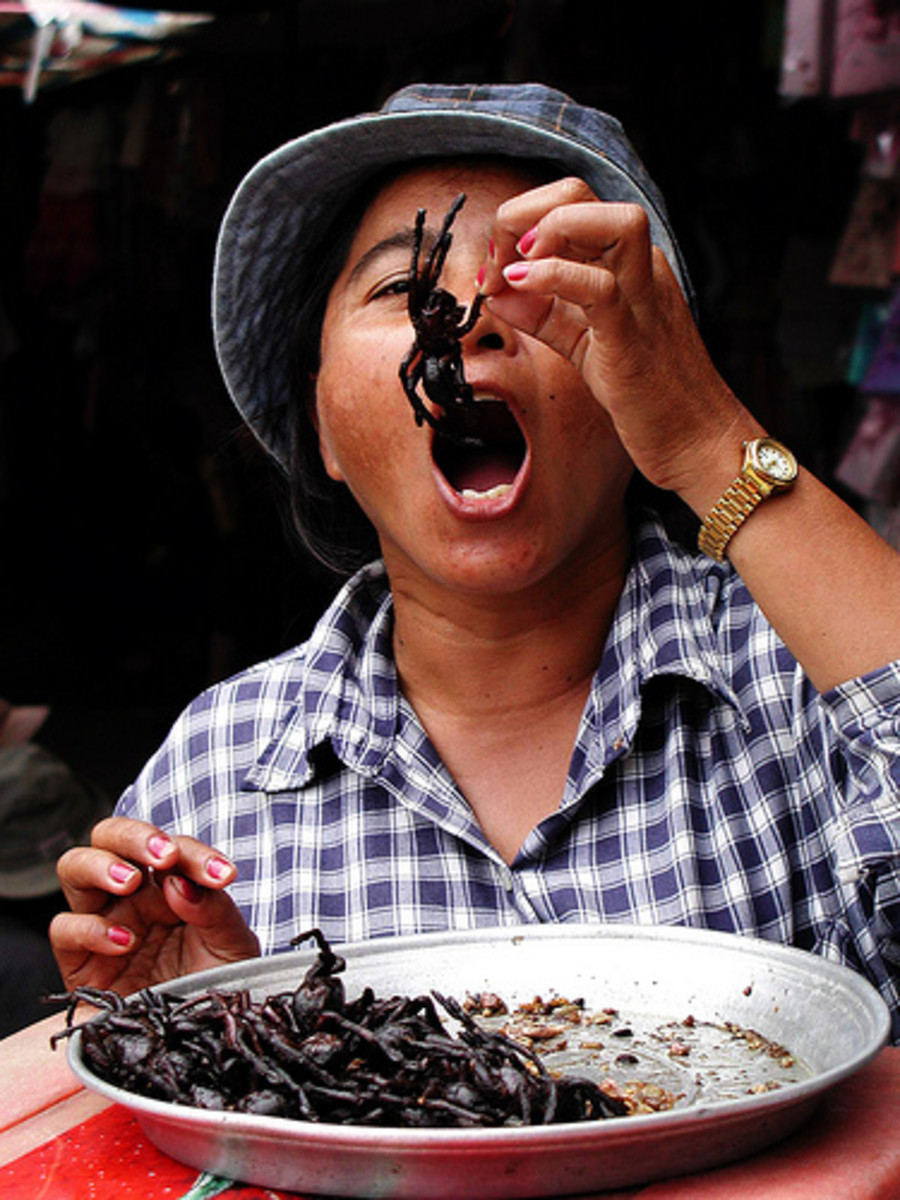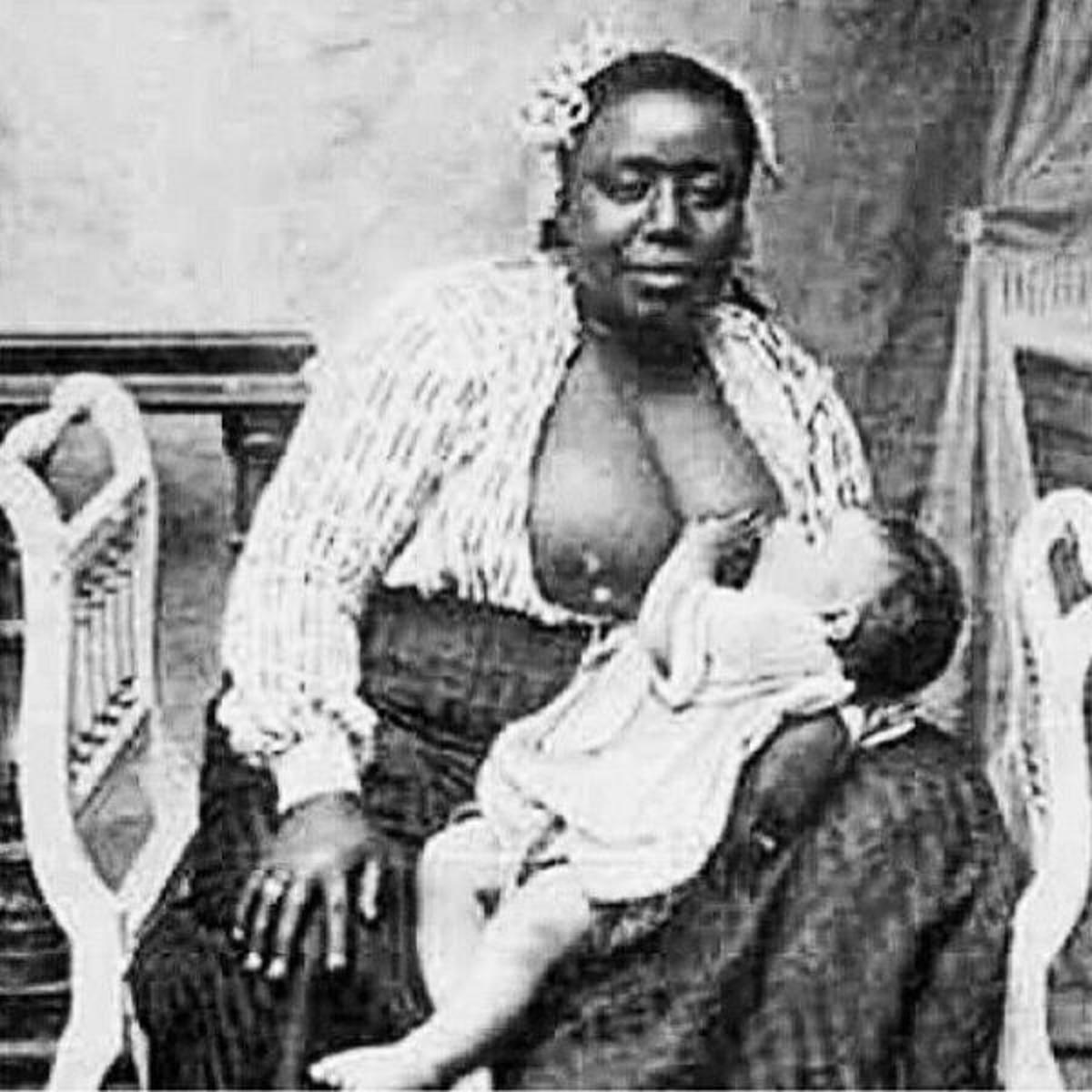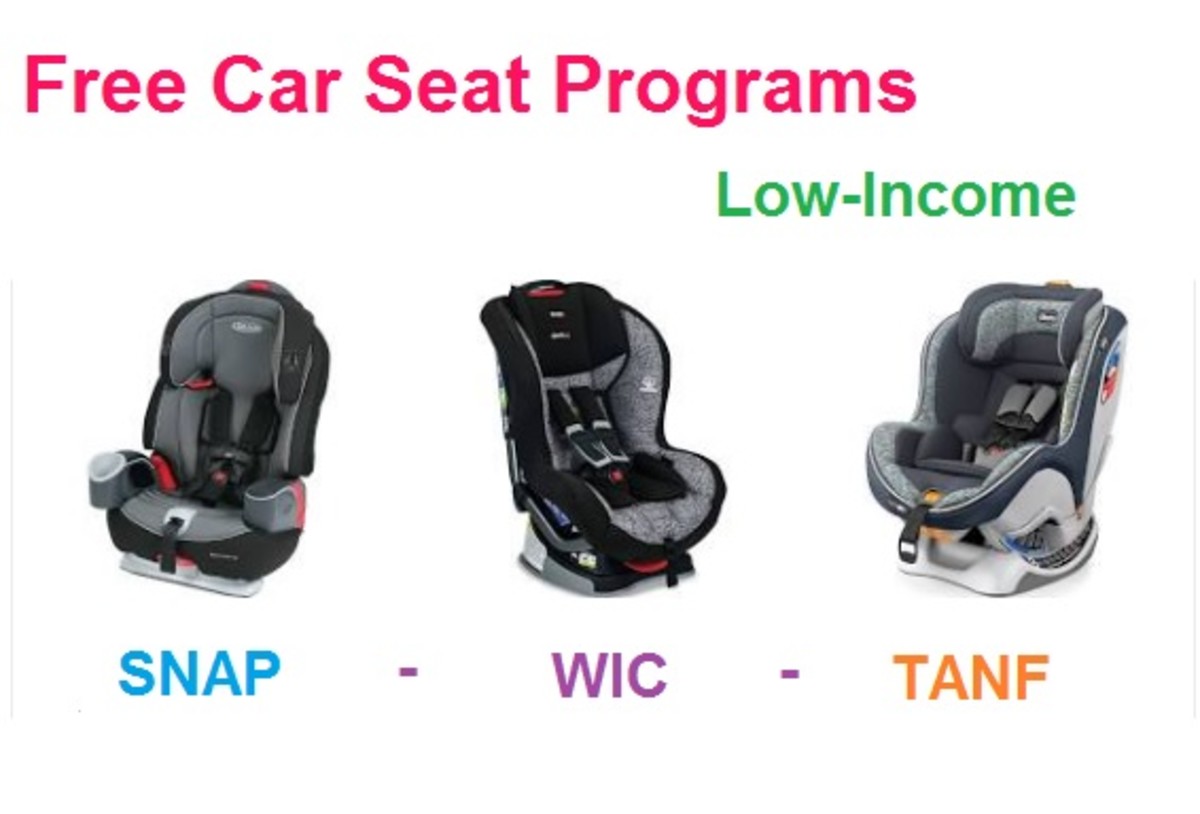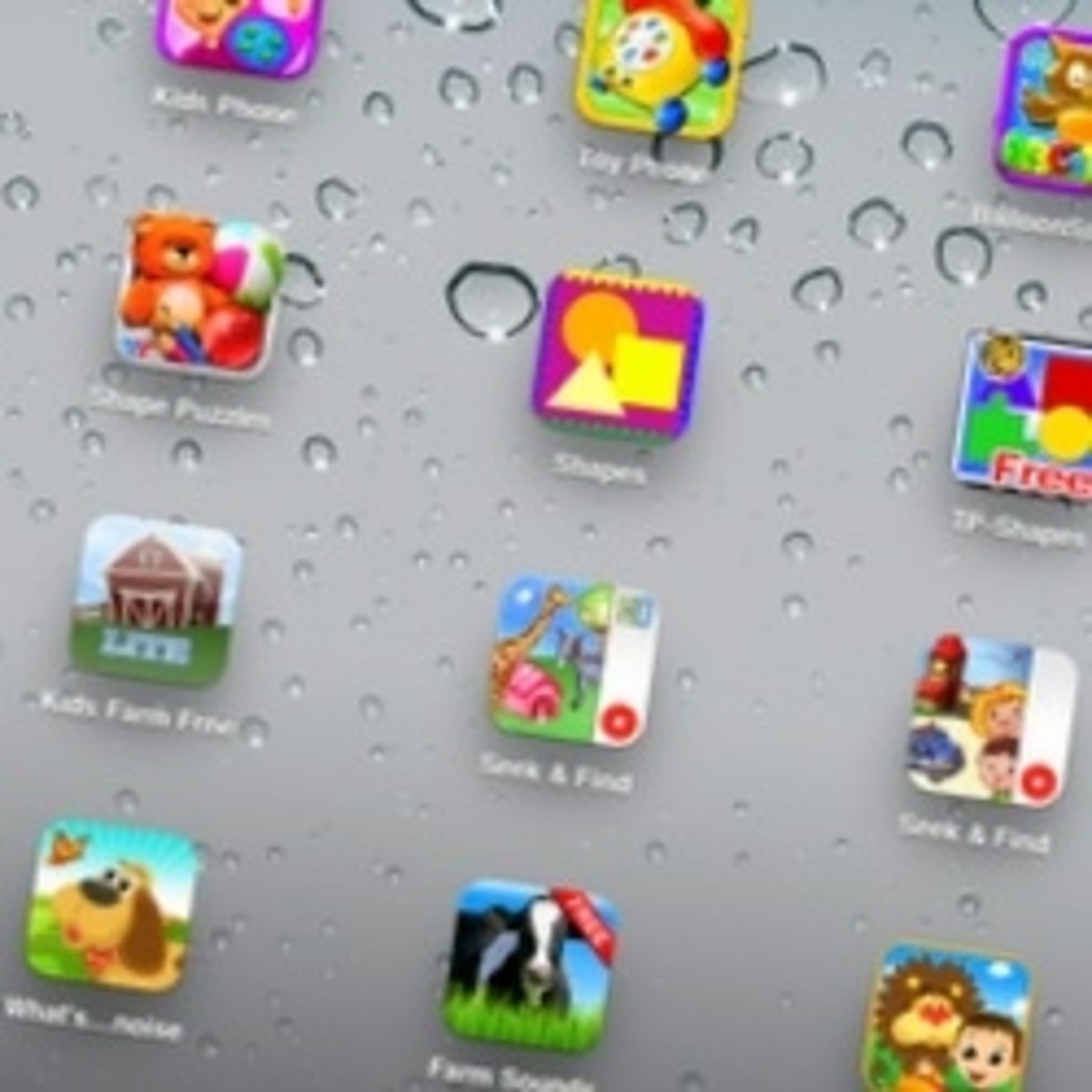Healthy Finger Foods For Babies and Toddlers
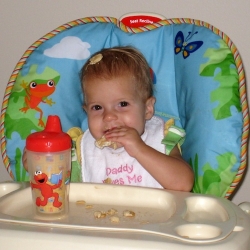
Finger Foods Your Baby or Toddler Will Actually Eat . . . And They're Healthy Too
Let's face it, babies and toddlers (especially toddlers) can be very picky eaters. It can be hard to think of types of healthy finger foods to introduce to your baby or toddler that they might actually enjoy. Once she got the hang of solids and had that 'pincer grip' that the experts tell you to watch for, I wanted to expose my daughter BJ to food that would be good for her and would be a lot less messy than the pureed carrots and banana that I was still trying to scrape off of my walls.
I did a bunch of experimenting with different recipes and suggestions from friends and family, and came up with some big winners. For parents who want to help their child form healthy eating habits right from the start, here are some of the best of the best right from my daughter and her playgroup friends' lists of favorite finger foods. I've included multiple selections from each food group and/or type of food to give you a wide range of ideas for feeding beginning 'hands on' snackers. Granted, I can't guarantee that your child will eat them, but they're at least baby and toddler-tested and found appealing by most. :)
I've also included some tested tips and suggestions for introducing new foods to your child. Believe me, I know how challenging that can be.
Happy eating!
photo credit: BunnyFabulous
What's most important to you about the finger foods your child eats?
What is your highest priority in purchasing finger foods for your baby or toddler?
Vegetables
Which ones are good to try with babies and/or toddlers
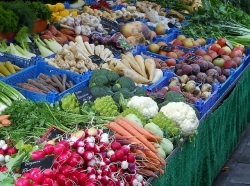
Vegetable Finger Foods
You don't always have to hide the veggies! Here are some that can be winners in your child's finger food repertoire. Always worth a try!
Broccoli
While broccoli may get a bad rap as a vegetable kids don't like, many of the toddlers I know like eating their 'trees' a lot. It's also a good source of Vitamin C, among other things.
For younger toddlers especially, broccoli should be served cooked. The florets are easier for young children to chew than the stalks which can get woody. It's easy to steam broccoli, or just buy it frozen and microwave smaller portions as needed then chop into small bite-size pieces and serve. Don't be afraid of frozen veggies! They're just as nutritious as fresh ones.
Cauliflower
If your child takes to broccoli, try cauliflower too. The floret tops are soft when cooked, and easily picked up by little hands. Just like broccoli, you can get frozen florets and microwave portions as needed.
Cauliflower is a very good source of Dietary Fiber, Vitamin C, Vitamin K, and Vitamin B6.
Peas
A friend turned me on to serving my daughter semi-frozen peas to help ease her teething pain at snacktime. Soaking frozen peas in water for just 10 seconds or so softens them up just enough to eat easily while still retaining enough cold. They seem to go over well with most babies I know. As your child gets more teeth, you can serve small peas straight out of the freezer if your child prefers the texture.
Edamame
Steamed young soybeans (edamame) as a great toddler snack? Who knew.
I served them to my daughter as an experiment, and she gobbled them up. Plus, they're super-healthy. The United States Department of Agriculture states that edamame are "a soybean that can be eaten fresh and is best known as a snack with a nutritional punch". Edamame contains protein, which further helps stabilize blood sugar, antioxidants, and omega-3 fatty acids. They also contain a high source of vitamin A, vitamin B and calcium.
I found it the most easy and convenient to buy ready-to-eat edamame rather than trying to shell them myself. You can usually find them in the refrigerated section of larger grocery stores near the soy cheese and veggie burger-type products. They can also be purchased frozen, then you cook them yourself. If you're not familiar with edamame, the pods they come in aren't edible. If you get ones in the pod, they cook up tastier than pre-shelled ones (at least in my opinion), but you'll need to remove them from the pod before serving them to babies or toddlers.
Another option for a toddler who has a bit more chewing power (read: has at least a molar or two) is dry roasted edamame.
Garbanzo Beans (Chickpeas)
While my daughter's not into plain garbanzo beans as a finger food, a number of her toddler buddies are. You can cook them yourself or get the canned variety and drain them. You can remove the translucent skin on the bean before serving if you prefer.
Hummus, the chickpea-based spread, isn't really a finger food per se, but it's a great dip for vegetables and crackers. My child will eat most anything if it's slathered in hummus.
Red Cabbage
When I broiled some red cabbage in a slightly sweet sauce (rice vinegar, soy sauce & honey) for a recipe, I let my daughter try some to see what would happen. She ended up liking it in small pieces. I think a lot of what got her to put it in her mouth in the first place was the bright purple color, then she figured out that she liked it. NOTE: do not feed honey to children under 1 year of age.
Bell Pepper
Again, the appeal of color. My daughter seems to have an aversion to most red foods, but yellow for some reason is OK. She likes small pieces of yellow bell peppers; I've tried green, but they look too much like the other green veggies she eats...ho hum in her book. Broiling peppers until soft makes it easier for toddlers with less chewing ability. Try them with dips such as hummus or ranch dressing.
Kale
For older toddlers, there's a simple way to cook this dark leafy green that's yummy for grownups too. Crispy Kale has a taste somewhat similar to a potato chip (albeit a more veggie-tasting one), but it's much, much healthier.
photo credit: http://www.flickr.com/photos/comprock/5104728271/
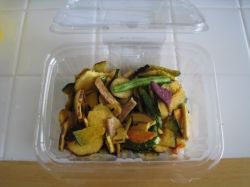
Vegetable Chips - A More Portable Veggie Finger Food For Toddlers
Veggies on the go can be a little tough to pull off, so vegetable chips can be a portable solution. They may not be quite as healthy as fresh vegetables, but they're definitely better than a lot of other options. Most large grocery store chains have these veggie chips (or something very similar) in their bulk foods section, usually in a plastic clamshell packaging as seen in the photo. This mixture contains green beans, taro, sweet potatoes, carrots and squash. There are some purple chips in there that I don't quite know what to make of. Maybe those are the sweet potatoes? Most of the veggie chips I've seen just have canola oil and a bit of salt in addition to the vegetables.
These are for older toddlers with teeth. I'd definitely break the chips up into smaller pieces for your child to chew more easily and not choke on. The green beans are the easiest to crunch, so a child used to taking bites of things would probably do well with them. My daughter LOVES veggie chips and would probably eat them all day if I let her. Not necessarily a bad thing, though. ;)
photo credit: BunnyFabulous
Cereals, Cereal Bars and Other Carb-Based Snacks

Looking Beyond Puffs . . . Carb Snacks With More Nutrition
Organic and/or healthier alternatives to popular toddler finger snacks.
Whether it's puffs, goldfish crackers or other grain-based snacks, this is an area where it can be more of a challenge to find nutrient-laden offerings for your baby or toddler. But since crackers, bread, etc. are some of the easiest type of snacks to feed toddlers, not to mention the ones that they can tend to gravitate towards, it's one where I tended to want the most suggestions. Some of my mom friends came to the rescue and shared a bunch of their favorites with me, and my daughter enjoyed quite a few of them.
From my friends' advice I was glad to find that some popular baby-focused brands as well as some products geared towards adults provided alternatives to popular kids' snacks that are still yummy and convenient. Another way to go is making some tasty-but-healthy treats yourself that pack a nutritional punch and are also appealing to other family members.
Below I've got a list of some of the tried and true favorites from that list of friends' suggestions. Their kids and my daughter have tested them all. :)
photo credit: http://www.flickr.com/photos/edenpictures/5313149370/
Kashi Heart-to-Heart Cereal
Go beyond Cheerios. Besides having o's and cute heart shapes, this cereal is designed to promote heart health. While that may not be your first thought for a baby/toddler snack, it gets kids off on the right foot, and is definitely healthier than many other finger food options. They're slightly more crunchy than regular cheerios, but not by much.

Annie's Homegrown Whole Wheat Cheddar Bunnies

Earth's Best Bars and Biscuits
My daughter appreciated Earth's Best teething biscuits to gnaw on at snacktime while she was teething. It was rare for her to finish off an entire biscuit at one sitting, but she's not known for a huge appetite. They're hard enough to provide the texture and pressure that a baby likes on their teeth, but with the gnawing and drool, they dissolve easily enough for young babies to eat.
When your child gets a little bigger, the cereal bars are wonderful. BJ liked them so much that she'd make a 'baaaa' sound to ask for a snack bar every day. They're less processed than most commercial brands and have added nutrients too. We liked the ones with fruit in the middle a lot; BJ wasn't so big on the crispy rice ones, and neither was I since the texture is a little too hard for children this young in my opinion.
Happy Baby Puffs
An organic whole grain melt-in-baby's-mouth snack with greens, apples or bananas baked right in? Yesssss! They're fortified with vitamins and minerals including vitamin D.
More bonuses about these snacks:
- Half the sugar of other brands
- Better value - 40% more puffs inside in a convenient flip-top package
- Green Packaging: Their containers are sourced through a green partnership with Method.They are made with 25% recycled materials, are BPA free, and are recyclable.

I Wish My Child Would Eat ______ More Easily - Picky, picky. Most kids turn up their noses at something. What is it for your child?
What type of food is toughest to get your child to eat?
More healthy and delicious Happy Baby snacks - I wish these would've been around when my daughter was a baby. While I've not tried them personally, they're all
Taking a Break for a Snack
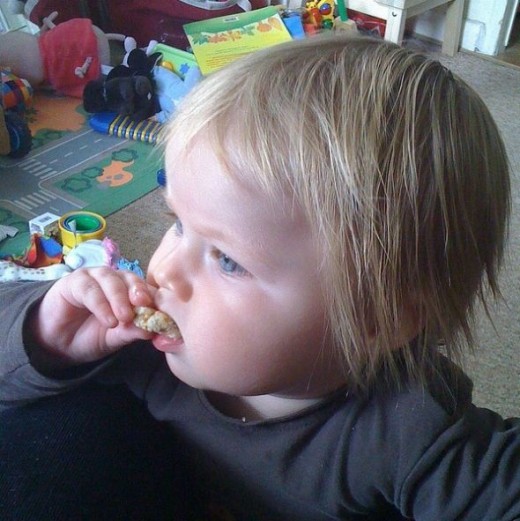
photo credit: http://www.flickr.com/photos/janetmck/7608617424/
Fruit
Delicious fruits to try and non-perishable options too
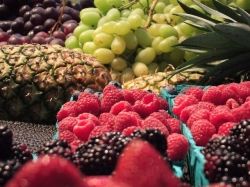
Fruit for Babies and Toddlers
Fruits are usually some of the easier finger foods to get toddlers to eat. Here are some ideas beyond the typical banana. Each of these items needs to be cut into little chunks small enough for your baby or toddler to eat easily.
Strawberries
Blueberries -- cut in half to prevent choking
Apples
Peaches
Pears
Mangoes
Bananas
Watermelon -- remove seeds. This is a big favorite of one of my daughter's playgroup buddies
Grapes -- remember to cut up to prevent choking
Avocados -- Cut into chunks, this can be a great finger food, and its smooth, creamy consistency is appealing to many babies and toddlers. My daughter also loves it mashed to the consistency of guacamole.
Sodium- and cholesterol- free, avocados contain valuable nutrients including 8% of the recommended Daily Value (DV) for folate; 4% DV for fiber and potassium, 4% DV for vitamin E; and 2% DV for iron. Per serving, avocados have 3.5 grams of unsaturated fats, which are known to be important for normal growth and development of the central nervous system and brain.
Black Olives -- Get them sliced in a can. They're easy to pick up and have an appealing 'O' shape which is perfect for little ones to stick on their fingers. It's great fun for kids to eat them off of a fingertip. These are a big favorite in our house.
photo credit: http://www.flickr.com/photos/plumandjello/2333263539/
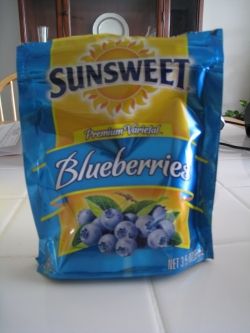
Dried Blueberries
While raisins are officially a 'no-no' for toddlers due to their sometimes sticky, sometimes hard (if they get dried out) nature, there's another dried fruit that I've found that can be a healthy alternative and far less likely to be choked on. These little dried blueberries aren't sticky and they're small enough to be handled by a toddler. You could always cut them in half if need be. They're naturally sweet and high in antioxidants, so you've got yourself a tasty, healthy treat for your little one. They get eaten easily at our house, and mommy sneaks some too.
I found these in a large grocery store chain, but haven't seen them on Amazon.com yet. I'll post a link when I do.
photo credit: BunnyFabulous
Finger Food For Babies: Freeze-Dried Fruit - It's not always easy to carry around fresh fruit. It can get messy, sticky, or need to be kept cool. Here's an easy

Proteins & Dairy
Finger food ideas and recipes

Proteins and Dairy for Babies and Toddlers
Even with 2 cups of milk a day, toddlers still need additional calcium. If your child doesn't get enough protein during meals, make up for it during snack time.
Black Beans
Cooked at home or the low-sodium canned version, black beans are a good source of protein and fiber. They're soft enough for toddlers to eat too. My daughter also likes black beans and cheese pureed to the consistency of refried beans. Not a finger food, but delicious and easy anyway.
Cheeses
While adults may see cheese as fattening and something to cut down on, it's a great source of calcium and protein for growing toddlers who need the fat too. Small cheese cubes can be cut up into bite-size pieces, or pre-sliced cheese can be broken into smaller pieces or given whole to a toddler to take bites out of, depending on the child's eating abilities. Large-shred cheese can be messy, but some kids like to pick up the little pieces to eat.
I don't know many kids (if any) who don't like cheese in some form or another.
Chicken/Turkey
You can still have finger-food chicken without getting into nuggets that have all the extra breading. Just served small chunks of cooked chicken instead. To have some on hand, I cook a package of chicken breasts all at once, chop them up, and put them in a zip top freezer bag. Just pop some in the microwave to defrost and serve.
Easy cooking method: put chicken breasts in a pot of boiling water (with or without sodium-free chicken stock powder), then cover and turn down the heat to a simmer for 20 min.
Tofu
The toddlers I know either love tofu or hate it. Seems to be a consistency thing. Since tofu is rich in high-quality protein, and is also a good source of B-vitamins and iron, it's worth a try. Extra Firm tofu holds together the best in little hands.
One of my daughter's buddies enjoys tofu raw right out of the package, but my daughter herself won't touch it unless it's cooked into something more appealing like Tofu Fries.
photo credit: http://www.flickr.com/photos/shyndarkly/4740912626/
Dry Roasted Edamame - Crunchy, portable protein
This one is for older toddlers who have a better ability to chew since they are slightly crunchier than most cereals, but when your kiddo has a molar or two, try them out. Dry roasted edamame is packed with soy protein and fiber, and has a kid-pleasing loud crunch. Don't just dismiss this nutritious on-the-go snack if your child doesn't go for cooked edamame; the consistency and taste are quite different... kind of nutty.

Freeze-Dried Yogurt Melts
Non-messy freeze dried yogurt is an easy on-the-go finger food option that needs no refrigeration. Yes, freeze dried yogurt snacks have sugar in them, but if you'd like an organic option that has more nutrition than the traditional Gerber melts, try Happy Baby's HappyMelts. They're part of a partnership with Stonyfield, the makers of YoBaby yogurt.
HappyMelts have 1 more gram of protein than Gerber, have Vitamin D (which Gerber lacks), and have 8% more of the Daily Value of Calcium than the Gerber yogurt melts.

More Baby and Toddler Finger Food Resources
Cookbooks, nutritional guidelines, how to introduce new foods, foods to avoid
Cookbooks and Recipes -- Preparing Delicious, Healthy Foods for Toddlers
I've prepared a number of finger food recipes for my daughter, and I wrote Healthy Toddler Finger Food Recipes to share the best ones.
I also found Annabel Karmel's books very helpful for thinking outside the box about what foods to try serving to my daughter as a baby and as a toddler. Annabel has both finger food and spoon/fork food recipes that my li'l girlie loves.


Introducing New Foods to Toddlers
Here are some tips and suggestions from experts and from my own experience.
* If at first you don't succeed, try, try again. Your toddler may hate his first, third, and ninth exposure to cauliflower, but the tenth time may be the charm.
* Try new food when you and your toddler are at your best - when you're both well rested, in good spirits, and healthy.
* Your child will be more open to a new food if he's hungry (but not overly hungry), so give him his new food first.
* Don't stop feeding your child if she makes a funny face - it doesn't necessarily mean that she doesn't like what she's tasting. She may just be reacting to the distinctly different taste. Even now, my daughter will sometimes grimace and then say that she likes a food and keep eating it.
* Try to keep your facial expressions positive, even if you're serving a food you detest. Likewise, keep your comments about the food positive as well. Don't preface introducing a new food by saying 'Here's some avocado, you may not like it.'
* On the other hand, some children may get their guard up if you make a big deal over a new food. Keeping things normal and low key tends to work better.
* Let your toddler see you eating the same food he's eating. He loves copying you.
* If your child gives you the thumbs-down on a particular food (closing his mouth, turning his head, throwing it), don't force it. Try again in a few days and he may surprise you by gobbling it up. Forcing food or showing your frustration may turn mealtime into a negative experience full of power struggles.
* Switch things up. Your toddler may tire of eating bananas at every meal and give up on them entirely. Plus, a varied diet is more nutritious for your growing child.
* Try the food in a different form. My daughter never liked carrots in their pureed or mashed form, but as an older toddler, she loves crunching on the thin 'twigs' of matchstick-sliced carrots.
* In the same vein, try a different temperature. Sometimes small pieces of a semi-frozen food go over better because the consistency is different, or the taste isn't as strong. Children's taste buds are much more sensitive than adults', and freezing a food tones down the taste. For example, my daughter doesn't care for fresh grapes that much, but if I give her small pieces of frozen grapes, it's quite a different story. She'll eat them right up. Just be careful to cut frozen or semi-frozen foods into very small pieces to prevent choking.
photo credit: BunnyFabulous
Learn More About Healthy Foods for Your Baby or Toddler
- Nutritional Guidelines for Toddlers
A list of daily nutritional guidelines for 1 to 3 year olds by Susan Gilbert, MS, Nutritionist on iVillage.com. - Foods That Can Be Unsafe for Your Baby or Toddler
Babycenter.com's compilation of foods to avoid for different stages of your child's development from birth to 3 years old. - The American Diatetic Association's Nutritional Guidelines for Babies/Toddlers
Includes information on getting started with eating right as well as avoiding food allergies. - Self Nutrition Data
A comprehensive site containing nutrition facts for a multitude of foods, compare nutrients in foods, and many more tools for nutrition, weight loss and overall health.








